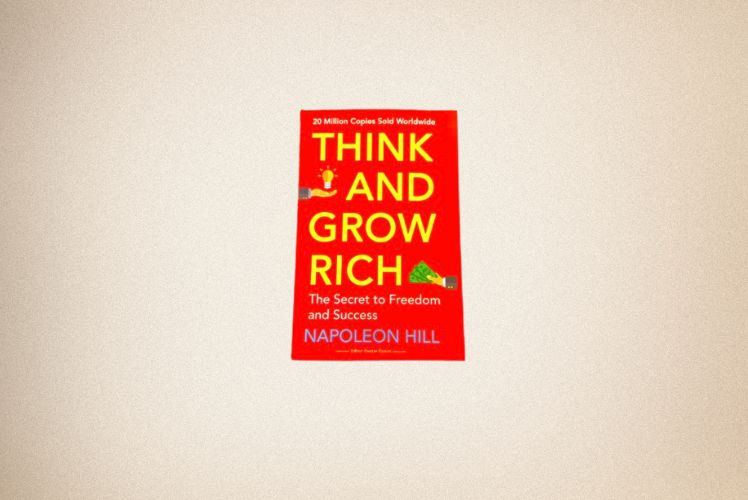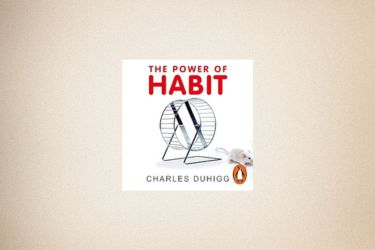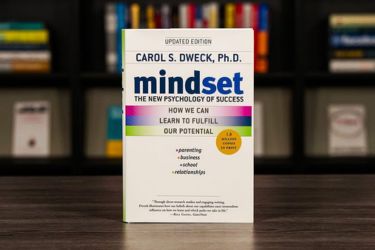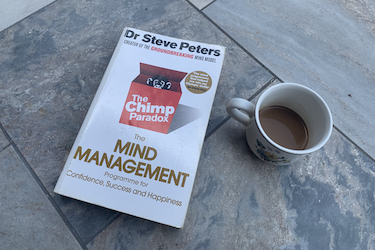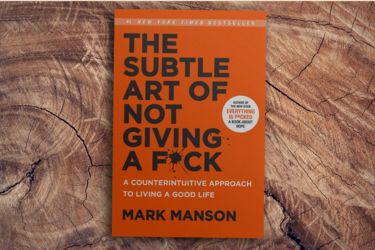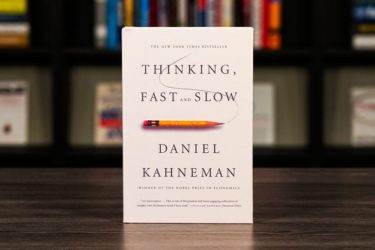"Think and Grow Rich" by Napoleon Hill is a timeless self-help book that has influenced countless individuals seeking personal success. Its principles on the power of mindset, collaboration, and goal-setting provide a roadmap for anyone aiming to achieve financial independence and personal development. First published in 1937, this book emerged during challenging times and has remained relevant by offering practical advice that resonates even today.
In this article, we will dive into the key concepts Hill presents, including the thirteen principles for success and the significance of a positive mindset. Readers will discover how Hill’s teachings encourage the formation of mastermind groups, emphasising the value of collaboration in achieving goals. These insights not only reflect Hill's profound understanding of personal success but also invite us to explore our potential through shared knowledge and support.
As we unpack Hill's work, we will consider its lasting legacy and examine both its praise and critiques. Join us as we explore how "Think and Grow Rich" continues to inspire those on the journey to financial and personal growth.
Key Takeaways
- Hill's principles focus on mindset and collaboration for success.
- The book offers practical steps relevant to modern readers.
- It has shaped the self-help genre and continues to influence many.
Overview of Think and Grow Rich
In this section, we will explore the core themes of Think and Grow Rich, its historical background, and the lasting impact it has had on the self-help genre. This classic book offers clear guidance on achieving success through tenacity and the right mindset.
Central Themes and Messages
Think and Grow Rich teaches us about the importance of mindset in achieving our goals. Napoleon Hill outlines thirteen principles that serve as building blocks for success. These include gaining clarity about our desires, visualisation of our goals, and maintaining a positive mentality.
Hill encourages us to establish a Master Mind group, which consists of like-minded individuals who support and challenge each other. By surrounding ourselves with positive influences, we can enhance our chances of success. This book emphasises that success is not only about financial gain but also about personal growth and fulfilment.
Historical Context and Publication
Published in 1937, Think and Grow Rich emerged during the Great Depression, a time of economic hardship in America. Hill based his work on the philosophies of successful people he studied for over 20 years, including figures like Andrew Carnegie.
The book quickly gained popularity and became a bestseller, selling over 100 million copies worldwide. Its relevance has persisted as it addresses universal challenges that many face, such as fear and doubt. Modern readers still find value in Hill's teachings, adapting them to today's context and obstacles.
Impact on the Self-Help Genre
Think and Grow Rich is often credited with laying the foundation for the self-help genre. It inspired countless authors and motivational speakers who followed. Many modern self-help books draw from Hill's principles, incorporating them into their frameworks for personal development.
Success stories from readers who applied Hill's methods have reinforced the book's significance. We see Think and Grow Rich as a timeless guide that continues to resonate, prompting individuals to pursue their dreams and overcome barriers through determination and belief in themselves.
Napoleon Hill: Author and Inspirations
Napoleon Hill is a pivotal figure in personal development. His work, particularly "Think and Grow Rich," has influenced countless individuals. To fully understand his journey, we need to look at his biography, the inspirations he drew from significant figures, and the controversies surrounding his contributions.
Biography and Motivations
Napoleon Hill was born in 1883 in Virginia. He faced many challenges in his early life, including poverty. His motivations stemmed from a desire to overcome these setbacks. In his twenties, Hill became a journalist, which led him to interview influential individuals such as Andrew Carnegie. Carnegie challenged Hill to study and identify the principles of success. This encouragement set Hill on a path to write about personal development, deeply impacting how we view success today.
In the years that followed, Hill faced personal struggles but persevered. His determination to create a body of work that helped others led to the publication of "Think and Grow Rich" in 1937. This book combined his insights and experiences into a guide for achieving wealth and personal success. Hill’s life journey showcases resilience and a steadfast commitment to understanding human potential.
Influential Figures and Research Process
Hill's research included extensive interviews with powerful figures like Thomas Edison and Henry Ford. He sought common traits among successful people, gathering insights into their mindsets and practices. This research process was crucial as it laid the foundation for the principles he later published.
Hill was also inspired by Rosa Lee Beeland, who later worked with him on his writings. Their collaboration emphasised belief in oneself and the importance of a positive mental attitude. By incorporating the wisdom of these influential figures, Hill created a framework that continues to inspire individuals seeking success.
Controversies and Contributions
Despite his contributions, Hill’s work has faced controversies. Critics argue that some of his claims were overly simplistic or even exaggerated. Yet, many readers find value in the messages of positivity and determination he preached.
Hill's emphasis on a success mindset has played a vital role in self-help literature. His 13 principles for success have become a cornerstone for many guidance programmes. While some details may be debated, his impact on personal development remains significant. Hill's legacy inspires us to pursue our goals with purpose and faith in our capabilities.
The Thirteen Principles for Success
In "Think and Grow Rich," Napoleon Hill outlines thirteen principles that guide individuals toward success. Each principle is a vital piece in the puzzle of personal achievement, focusing on our thoughts, beliefs, and actions.
Desire and Definite Purpose
Desire is the starting point for all achievement. We must have a burning desire to reach our specific goals. This desire fuels our ambition and pushes us to take action.
Alongside desire, we need a definite purpose. This means clearly defining what we want, setting concrete goals, and knowing why we want them. A well-defined purpose keeps us focused. It prevents us from straying off course and gives our desire direction.
To strengthen our desire, we can use affirmations and visualization techniques. By regularly reminding ourselves of our goals, we build a powerful mental image of success.
Faith and Autosuggestion
Faith in ourselves and our abilities plays a crucial role in our journey to success. We must genuinely believe that we can achieve our goals. This belief helps us overcome doubt and fear.
Autosuggestion is the practice of feeding our subconscious mind positive thoughts through repetitive affirmations. By using positive self-talk, we reinforce our faith and strengthen our determination.
Creating a routine of daily affirmations can help enhance our faith. When we repeat affirmations about our goals and capabilities, we slowly build an unshakeable belief in our potential. This belief is essential for overcoming obstacles.
Imagination and Organised Planning
Imagination allows us to think creatively and envision new possibilities. We can brainstorm ways to achieve our goals or solutions to problems we might face along the way. Imagination sparks innovation and enables us to see beyond our current circumstances.
Once we have ideas, we need organised planning to turn these ideas into reality. A successful plan includes clear steps and timelines. We can create checklists or outlines to stay on track.
Planning not only makes our goals seem attainable but also helps us anticipate potential setbacks. By preparing for these challenges, we can adjust our plans and continue moving forward.
Persistence and Overcoming Setbacks
Persistence is key to success. We will face obstacles and setbacks on our journey. It is our ability to stay committed, even when times get tough, that defines our success.
In moments of challenge, we must remind ourselves of our strong desire and definite purpose. This can reignite our motivation and determination.
We can also learn from setbacks, viewing them as lessons rather than failures. By adapting and refining our approach, we build resilience. Each time we persevere, we strengthen our ability to succeed in the future.
Following these principles can greatly enhance our chances of achieving our goals and realising our dreams. Let's embrace them and work towards our success together.
Mindset and the Subconscious Mind
Our mindset plays a crucial role in shaping our reality, largely through the influence of the subconscious mind. By understanding how to programme this powerful part of our brain, we can harness its potential for personal growth and goal-setting. Key strategies like affirmations and visualisation can help us change our inner dialogue and overcome barriers like fear and doubt.
Programming the Subconscious Mind
Programming the subconscious mind involves techniques that can help us replace negative thoughts with positive ones. We can achieve this through affirmations—positive statements we repeat to ourselves. Regularly practising affirmations can enhance our self-belief and confidence.
Another effective method is visualisation. This technique requires us to vividly imagine achieving our goals. By engaging all our senses in this mental imagery, we signal to our subconscious mind what we desire to manifest in our lives.
To programme our subconscious effectively, we should be consistent and approach it with clarity. Setting specific goals can guide our affirmations and visualisation practices. Consistency helps reinforce our new beliefs over time.
Role of Belief and Emotion
Belief is a powerful motivator behind our actions and decisions. When we truly believe in our potential, we set ourselves up for success. Our emotions play a vital role in this process, as positive feelings can strengthen our resolve.
To create a supportive mindset, we need to align our beliefs with our goals. This means identifying any limiting beliefs that may hinder our growth. We can then consciously shift these beliefs through techniques like journalling or talking with a mentor.
When we experience positive emotions related to our goals, we become more motivated to take action. This emotional connection fuels our drive for personal growth and helps us reach our objectives more effectively.
Conquering Fear and Doubt
Fear and doubt can act as significant barriers to our success. To conquer these feelings, we must first acknowledge them. We should not ignore our fears; instead, we can face them head-on.
Using techniques like affirmations can help us combat these negative feelings. By affirming our strengths and capabilities, we build resilience against self-doubt. Moreover, visualisation techniques allow us to envision success, making it easier to push past our fears.
Creating a supportive environment is also essential. Surrounding ourselves with positive influences can help us stay focused on our goals. By building a network of support, we can better navigate challenges and foster a mindset geared toward success.
Mastermind Groups and the Power of Collaboration
Mastermind groups are essential for achieving our goals through collaboration and shared knowledge. By working together, we can tap into our collective intelligence and support each other in our pursuits. This section explores how these groups are formed and how they function effectively.
Formation and Function of Mastermind Groups
Mastermind groups are formal alliances between individuals with a shared goal. They typically consist of 3 to 10 members who meet regularly. These meetings can be face-to-face or virtual.
The primary function of a mastermind group is to coordinate knowledge and efforts. Members offer feedback, share experiences, and brainstorm ideas. This synergy can spark creativity and encourage each member to push beyond their limits.
We leverage our combined knowledge and skills, creating a supportive environment. This dynamic often leads to innovative solutions that we might not find on our own. The concept of "the power of the mastermind" highlights the strength in unity and collaboration.
Like-Minded Individuals and Collective Intelligence
In mastermind groups, the presence of like-minded individuals creates a sense of harmony. Each member is focused on a specific purpose, whether it's financial independence or personal growth. When we align our goals, we enhance our chances of success.
Collective intelligence plays a vital role in these groups. By sharing insights and intuition, we benefit from diverse perspectives. This collaboration can lead to breakthroughs that elevate our thinking and decision-making.
Our “sixth sense” can improve through discussions with others, helping us recognise opportunities and make better choices. Moreover, the energy in mastermind groups can drive us to harness our creativity and motivation, facilitating the process of sex transmutation. This points to the importance of collaboration in achieving our aspirations.
Legacy, Critique, and Modern Relevance
"Think and Grow Rich" has left a lasting imprint on personal development literature. Its lessons remain pertinent, yet not without critique. By examining its influence, limitations, and how it applies to us today, we gain deeper insight into the book’s ongoing significance.
Ongoing Influence on Personal Development
The ideas in "Think and Grow Rich" continue to shape the personal development landscape. Millions have turned to its principles for guidance, seeking financial success and personal fulfilment.
Key concepts such as determination, positive thinking, and setting clear goals resonate with us. Many successful individuals cite this book as a key influence in their journeys. We find evidence of its impact in numerous success stories across various fields.
Courses, workshops, and online communities often reference Hill’s teachings. Many modern self-help authors and motivational speakers build on his ideas, proving that his work still inspires us to overcome obstacles.
Criticisms and Limitations
While Hill’s work remains beloved, it isn’t without its criticisms. Detractors argue that it promotes an overly simplistic view of success. Critics often point out that financial achievement is not solely about mindset.
Issues such as socio-economic factors, education, and opportunity play significant roles that the book can overlook.
Some modern readers may feel disappointed by the lack of diversity in success stories presented in Hill’s work. Additionally, the language may feel outdated to contemporary audiences. We must recognise these limitations while still valuing the core messages.
Lessons for Contemporary Readers
For us, the lessons in "Think and Grow Rich" offer valuable insights into success. We can take away key principles that help us navigate today’s challenges.
For instance, Hill’s emphasis on persistence and action is crucial in our rapidly changing world. Setting clear, achievable goals remains relevant for our personal and financial aspirations.
Moreover, the importance of a positive mental attitude is something we can apply daily.
By adapting these lessons to modern contexts, we unlock pathways to success. Engaging with Hill’s ideas can inspire innovative thinking and greater resilience in the face of obstacles, making the book a useful resource even today.
Frequently Asked Questions
In this section, we will address common questions about "Think and Grow Rich" by Napoleon Hill. The insights gained will help clarify its principles, notable quotes, and its impact on self-help literature.
What are the key principles outlined in 'Think and Grow Rich'?
Hill identifies 13 key principles in the book. These include desire, faith, and persistence. Each principle plays a role in helping individuals change their mindset and achieve success.
How does the 21st century edition of 'Think and Grow Rich' compare to the original?
The 21st century edition includes updates and commentary that reflect modern contexts. While the core content remains, readers benefit from insights that make the principles more relatable to today’s challenges and opportunities.
Can you provide a summary of the most significant points made in 'Think and Grow Rich'?
Significant points include the importance of having a clear goal and a positive mental attitude. Hill emphasises the value of teamwork and the power of belief in achieving personal and financial success.
What are some notable quotes from 'Think and Grow Rich' that encapsulate its message?
Some memorable quotes include, “Whatever the mind can conceive and believe, it can achieve.” This highlights the power of mindset. Another key quote is, “Success requires no explanations. Failure permits no alibis,” stressing accountability for our actions.
Is there a workbook available that complements 'Think and Grow Rich'?
Yes, there are workbooks available that serve as guides to apply the principles from the book. These resources help readers engage more deeply with the material and create actionable plans for their personal goals.
How has 'Think and Grow Rich' influenced modern self-help literature?
The book has had a significant impact on the self-help genre. Many contemporary authors cite it as a foundational text that inspires their own works on personal development and financial success. Its principles continue to resonate with readers seeking growth.

